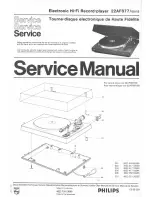At the bottom of the screen, you'll see something like this:
Status icons
on the left tell you which apps have sent you notifications; for example, that a message has arrived, or
it's time for a meeting.
System icons
on the right display the current wireless and network connection strength, battery level, time, and
more.
Touch & type
Use your fingers to manipulate icons, buttons, menus, the onscreen keyboard, and other items on the touch screen.
You can also change the screen's orientation.
To select or activate something, touch it.
To type something, such as a name, password, or search terms, just touch where you want to type. A keyboard pops
up that lets you type into the field.
Other common gestures include:
Touch & hold:
Touch & hold an item on the screen by touching it and not lifting your finger until an action
occurs.
Drag:
Touch & hold an item for a moment and then, without lifting your finger, move your finger on the screen
until you reach the target position. For example, you can drag to reposition shortcuts on the Home screen.
Swipe or slide:
Quickly move your finger across the surface of the screen, without pausing when you first touch
(so you don't drag something instead). For example, you can slide a Home screen left or right to view the other
Home screens.
Pinch: In some apps (such as Maps, Browser, and Gallery), you can zoom in and out by placing two fingers on
the screen at once and pinching them together (to zoom out) or spreading them apart (to zoom in).
Rotate the screen: On most screens, the orientation of the screen rotates with your device as you turn it. You
can change this Display setting.
Related settings
Settings > Device > Sound
Settings > Device > Display
Use the lock screen











































